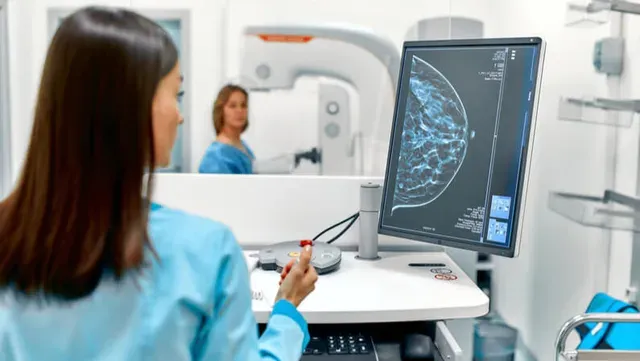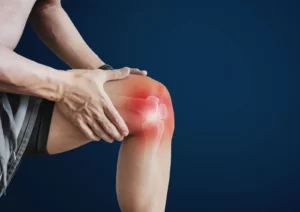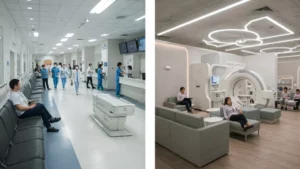Women are often confronted with the issue of whether to get 3-dimensional mammography or digital breast tomosynthesis (DBT) as it becomes more widely available across the country.
Women are often confronted with the issue of whether to get 3-dimensional mammography or digital breast tomosynthesis (DBT) as it becomes more widely available across the country.
Is it safe, more effective, and suitable for all women to use this technology? A 3D mammography differs from a standard 2D mammogram in that it provides a three-dimensional image of the breast.
Doctors can use a 3D mammography to check for breast cancer in patients with no apparent symptoms. The procedure may be beneficial for women with dense breast tissue.
A 3D mammography is explained in this article, along with what to expect from the procedure. Results and risks are also considered.
What Is 3D-Mammogram
Standard mammograms use low-dose X-rays to check for abnormalities in women’s breast tissue.
2D digital mammography has long been the gold standard for early detection of breast cancer due to its ability to obtain two X-ray pictures of the breast at once, one from the top and another from the side.
Although it detects a substantial number of breast tumors, its use is limited: It’s harder to decipher the photos because of the overlying tissue, which might obscure malignant tumors.
A 3D diagnostic mammogram is a type of breast imaging in which an X-ray traverses in an arc over the breast, collecting multiple images from different angles. Tumors can be more easily detected thanks to the computer-generated thin, 1-millimeter images of the 3D images. Using 3D mammography, the radiologist examines between 200 and 300 pictures, compared to just four from a 2D mammogram.

Why It’s Being Done
In the fight against breast cancer, 3D mammography might be your greatest hope of detecting the disease early.
The benefits of 3D mammogram as compared to a traditional 2D mammogram are as follows:
- LEAST EXPOSURE TO RADIATION
In 3D mammography, radiation exposure to breast tissue is highly minimal. Compared to 2D images, 3D mammograms need less compression and less amount of radiation exposure for patients. Today’s mammography systems are among the safest and most comfortable available.
- EARLIER DETECTION
It is more likely that breast cancer will be detected early using 3D mammogram. The precision and efficiency of this technique are due to its capacity to better analyze dense breast tissue than traditional 2D mammography. In a 2D mammography, dense breast tissue can reduce sensitivity. In a 3D mammogram, dense breast tissue is no longer a concern.
- FEWER CALLBACKS
When compared to 2D mammography, 3D mammography yields better results. This reduces the number of false positives or callbacks.

Risks
Mammography is associated with several risks, including:
- Treatment of tumors that would not have negatively influenced the patient’s health.
- Unpleasant feelings
- Negative tests
- Cancer caused by exposure to high levels of radiation (extremely rare)
A comparison of the risks associated with 3D and 2D mammography is not evident. Combining 2D and 3D mammography increases radiation exposure. Radiation-induced cancer risk is still exceedingly low, though.
How You Prepare

To help you get ready for your mammogram, the American Cancer Society has some suggestions.
- Before having a mammogram, tell your doctor about any recent changes or concerns you’ve seen in your breasts.
- Do your best to bring your previous mammography records with you (or have them mailed to your new institution), so they may be compared to the new ones.
- It’s a good idea to carry a list of previous mammograms, biopsies, and other breast procedures with you when you visit a new clinic.
- Having only your top and bra to remove for the mammography may make it more convenient for you to wear a skirt or slacks.
- Don’t use deodorant or antiperspirant on the day of the exam. White dots may appear on the x-rays. If you don’t plan on heading home after the exam, you may want to bring your deodorant with you.
- To minimize discomfort and ensure clear images, have your mammogram performed while your breasts are not sore or swollen.
- Make an effort to get your mammograms performed at the same institution each year so that results may be compared readily.
- It’s best to go to a mammography clinic that conducts a lot of mammograms every day if you have the option.
Knowing that you have a choice is crucial. You have a choice as to where your mammogram will be performed.
It’s best to go to One Step Diagnostic, specializing in mammography and doing several each day.
What You Can Expect
The 3D picture of your breast is created by combining photos taken during a 3D mammogram.
The 3D mammography pictures may be analyzed as a whole or in smaller sections for improved clarity by the doctor. The system also generates 2D mammography pictures for breast cancer screening.
A radiologist examines the photos to look for anything that would point to breast cancer in the patient. They’ll utilize the 2D mammography pictures to decide whether extra testing is required to detect abnormalities.
A biopsy, an MRI, or an ultrasound may also be used as further testing for breast cancer, depending on the kind of cancer and the stage of the disease.

Results
The radiologists may need extra time to study and interpret the findings of a 3D mammography since it includes more pictures than a regular one.
The pictures will be examined by radiologists, who will search for evidence of aberrant growth, hardness, or lumps in breast tissue.
The results will be interpreted and sent to the patient’s physician for evaluation and any additional tests that may be necessary.
Get Medical Advice
After having a 2D mammography, the 3D experience will be familiar to you. Little has changed on your end of the exam.
When compared to regular 2D mammography, the only notable difference is that this machine makes an arc over your breasts as it moves over you.
It’s the behind-the-scenes differences that make 3D standout. Your breast tissue is examined in greater depth by the radiologist.
Call One Step Diagnostic if you’re still wondering if it’s right for you.




